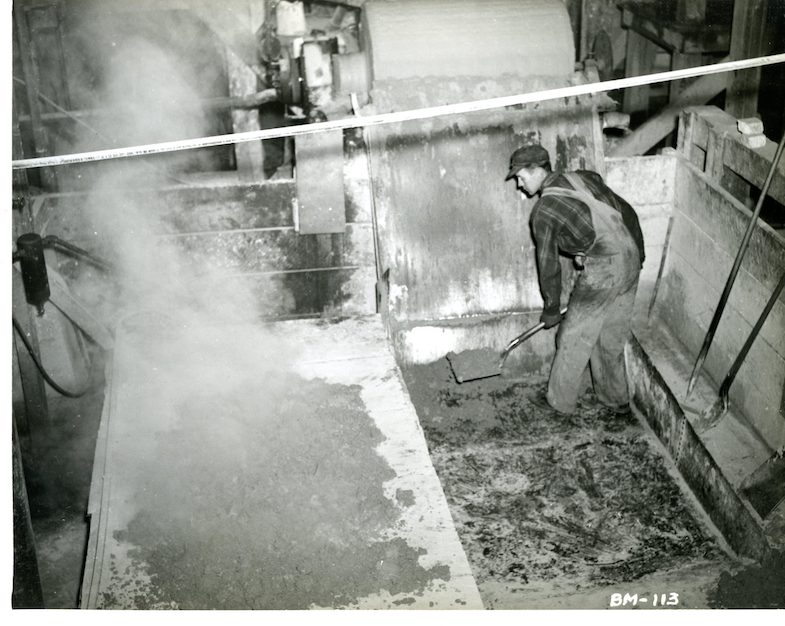Water quality at abandoned mine site will see much needed help through U.S. Government direction
Published on January 15, 2021
On January 15, 2021, the Environmental Protection Agency (EPA) and the U.S. Forest Service (USFS), with concurrence by the U.S. Department of Justice, signed an Administrative Settlement Agreement and Order on Consent (ASAOC or the Agreement) with Midas Gold that instructs Midas Gold to clean up contaminated conditions within Idaho’s abandoned Stibnite mining district. While Midas Gold did not cause the environmental problems at Stibnite, the Agreement directs and authorizes the company to provide private investment and conduct time critical cleanup actions to address water quality concerns that have plagued the abandoned hardrock site for decades. The Agreement is a necessary step for a private entity, such as Midas Gold, to provide investment and environmental cleanup at an abandoned mine site.
See the official release on the announcement.
“While we did not cause the problems impacting water quality today, we have always been clear in our intentions to be a part of the solution,” said Laurel Sayer, CEO Midas Gold Corp and Midas Gold Idaho. “So, when we saw the need to address sources of water contamination more quickly at Stibnite, we knew we had to offer our help.”

Stibnite provided the U.S. with key minerals to support the war effort during World War II and the Korean War. This picture shows a miner working at site in 1943.
Water at Stibnite is heavily impacted from decades-old mining activity largely stemming from unregulated mining around the World War II era. However, through a series of settlements between prior operators and government agencies, the site has been effectively abandoned with no responsible parties left to address existing conditions. Through the multi-year process of evaluation and discussions, the EPA concluded in the Agreement that current site conditions constitute an “actual or threatened release of hazardous substances” which warrants immediate and time critical actions to protect human health, welfare, and the environment.
To provide investment and cleanup of legacy environmental hazards and waste left behind at Stibnite, under a clear plan approved by regulators, Midas Gold reached an agreement with federal agencies under the Comprehensive Environmental Response, Compensation and Liability Act (“CERCLA”) to define the work the company will conduct and to clarify protections for the company from inheriting the environmental liability of past actors who abandoned the site.
Midas Gold’s vision has always been that private industry can provide environmental solutions. Today’s agreement shows that the commitment to restoring the site is not only theoretically possible but can become a reality. Under the agreement, Midas Gold is authorized to conduct EPA supervised activity to provide improvements to water quality. Phase 1 of the agreement will remove 325,000 tons of legacy waste, provide water diversions, and involve environmental, site characterization and cultural studies of the site to better inform actions in phases 2 and 3, which would occur if the Stibnite Gold Project is approved for mining through the National Environmental Policy Act (NEPA). Work conducted under this Agreement will be approved and closely overseen by the Environmental Protection Agency and United States Forest Service and will be safeguarded by financial assurance to make sure the work is completed.
“Water quality in the Stibnite Mining District has been a known problem for decades. As the closest community to the site, I can tell you that cleanup is long overdue. This agreement between the EPA and Midas Gold is the first meaningful step toward real improvements in water quality conditions for the East Fork South Fork Salmon River and downstream communities like Yellow Pine. We have seen Midas Gold’s commitment to doing business the right way and their willingness to help with clean up now tells me they are the right partner for this effort,” said Willie Sullivan, Yellow Pine Resident, and board member of the Yellow Pine Water Users Association.
The agreement is separate from project approval for the Stibnite Gold Project and will have no impact on the permitting process for the Project which is currently underway. Nor does the agreement change the schedule to complete the comprehensive environmental review and analysis under NEPA.
Midas Gold employees have closely been monitoring water quality conditions since they started exploring the site in 2009.
Important Facts
- The historical Stibnite mining district in central Idaho has seen mining activity for over 100 years and was a critical source of antimony and tungsten for the U.S. war efforts through WWII (World War II) and the Korean War. Today, legacy sources of water pollution largely stemming from War-era mining activity are impacting the East Fork of the South Fork of the Salmon River, Meadow Creek, and ground water sources in the region.
- From 2000 to 2012, three Comprehensive Environmental Response, Compensation and Liability Act (CERCLA) settlements were signed between previous operators at Stibnite and U.S. agencies regarding the historical Stibnite mining district. These settlements provided some improvements to site conditions but effectively left Stibnite with no parties responsible for remaining environmental conditions. Yet, water quality has continued to be impacted by the release of hazardous substances stemming from legacy features. In some areas of site, recent data shows arsenic in ground water can peak at 700 times the drinking water standard. EPA has considered Stibnite for listing on the National Priority List of sites needing attention since 2001.
- Midas Gold recognizes that if redevelopment of mining activity were to occur at Stibnite, it needs to address the environmental legacies that have been left behind. Therefore, the proposed Stibnite Gold Project was designed to address the legacy conditions within the mine’s footprint in parallel with proposed mining activity and has been under NEPA review since 2016. Project operations alone would likely leave contaminated conditions outside the Project footprint unaddressed and provide no environmental uplift before mining begins. The ASAOC will both provide action now and provide long term sitewide cleanup during future operations.
- In 2018, Midas Gold approached the EPA regarding water quality conditions at Stibnite that were troubling and sought to identify a path to clarify how the Company could address these legacy sources of water contamination without inheriting the liability belonging to past actors.
- Through many years of discussion and planning lead by the EPA, the ASAOC is a legally enforceable order that will direct Midas Gold in the immediate cleanup of important areas of the historical mining district and allow for site-wide legacies to be addressed should the Stibnite Gold Project be approved. The Agreement provides clarity to both Midas Gold and the EPA on expectations, milestones and outcomes for site cleanup and penalties.
- The ASAOC does not authorize mining activity nor does it change the NEPA permitting process or anticipated timeline for the NEPA review of the Stibnite Gold Project.
- The ASAOC recognizes that Midas Gold had no role in creating the problems at Stibnite and may conduct, under agency direction, work to address environmental conditions at Stibnite without inheriting the liability of the conditions left by past operators.
- The ASAOC comes with a determination by federal regulators that site conditions presently constitute an “actual or threatened release of hazardous substances” and that time critical removal actions are necessary to protect human health, welfare and the environment. As such, the Agreement directs Midas Gold to conduct near-term actions focused on addressing the most immediate needs to improve water quality and then provides a path for the long-term comprehensive cleanup of the site should the Stibnite Gold Project be approved.
- Phase 1, which is based on a plan developed with regulators in consultation with two Idaho tribes, will take four years and includes the removal of 325,000 tons of legacy waste, investigation of five adit areas, a site characterization study, three water diversions, a biological assessment, Section 404 Clean Water Act evaluation and a cultural resource survey. Phase 1 actions were determined by the agencies to improve water quality most efficiently within the financial resources of Midas Gold currently. Should the Stibnite Gold Project be approved and phases 2 and 3 undertaken, the order provides a path to comprehensive site cleanup in conjunction with an approved mining plan.
- The Government Accountability Office’s 2020 report on abandoned hardrock mines, prepared for the Ranking Subcommittee Member on the Interior, Environment and Related Agencies Subcommittee of the U.S. Senate’s Committee on Appropriations, cited a lack of resources and concerns around liability as the primary roadblocks to providing solutions to the nation’s abandoned mines. It noted that “state agency officials and other stakeholders we interviewed, such as nongovernmental organizations and mining companies, have limited their participation in projects to address environmental hazards at abandoned mines because of concerns about their potential legal liability under CERCLA and the Clean Water Act” (p.35). Within the report, USFS estimates that, assuming no private party contribution, it would cost USFS approximately $6 billion to address environmental hazards at 6,600 abandoned hardrock mine sites on USFS land.
Do you still have questions about the Agreement or what this means for Stibnite? We made a FAQ just for you.

